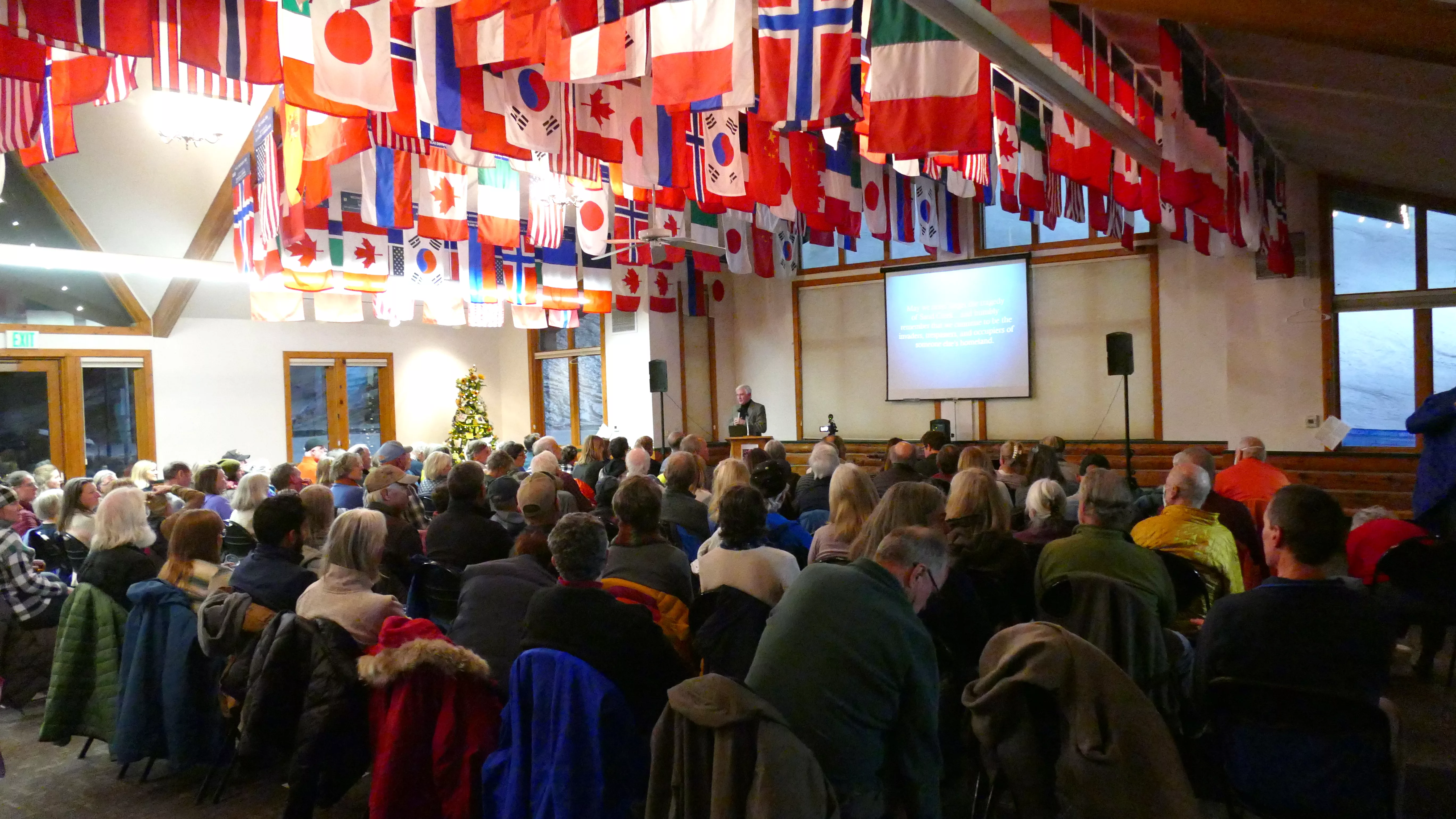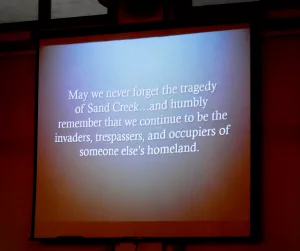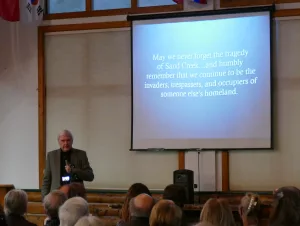
By Shannon Lukens.
Author and historian Flint Whitlock is an expert on the Sand Creek Massacre, which happened Nov. 29, 1864. He spoke Tuesday in Olympian Hall at Howelsen Hill, as part of History Happy Hour, hosted by the Tread of Pioneers Museum.
It was 159 years ago, when one of the worst criminal acts by the U.S. Army was carried out on an encampment of peaceable Indians at a place in eastern Colorado known as Sand Creek. U.S. Army troops killed 250 men, women, and children of the Cheyenne and Arapaho tribes, peacefully living on the banks of the Arkansas River and Sand Creek, in southeast Colorado.
Flintlock spoke about the impact of the Sand Creek Massacre on everyone in the western part of the United States.
“The Sand Creek massacre had a tremendous impact on the west, from the Mississippi River to the Pacific. And, of course, the 4corners region is an important part of that being home to the Navajo and Hopi reservations and other Indian reservations in that part of the country.”
Whitlock started the talk with the fact that we are all living in somebody else’s home, as we, “eradicated our neighbors and stole their land.” He said he is ashamed for our ancestors.
The talk was divided into three parts: Historical Background, the Attack, and the Aftermath. He spoke about how when the Territory of Colorado was formed in 1861, the cattle ranchers, farmers, and sheep ranchers put up fences and took over the land, and the treaties were broken.
Most tribes remained neutral during the Civil War. Whitlock says President Lincoln was reactionary when it came to Native Americans and he broke treaties with them, saying he, “viewed them as a foreign people.”
The Sand Creek site is 170 miles southeast of Denver. Before the massacre, it had 113 tents or lodges with 652 men, women, and children. The army had the Indians turn in their weapons. Some still had a few, such as knives and bow and arrows.
When Chivington’s crew came to attack, they had 650-740 men with four artillery pieces.
In the camp, there was a flagpole with an American flag and a white flag of truce. Chief Black Kettle stood by that pole because he thought they would all be protected. That’s what he had been told. They weren’t.
Whitlock said he wouldn’t go into the dismemberment and butchering atrocities that the soldiers inflicted on the tribe members.
Two other military leaders refused to participate and later told what Chivington had done in the killing, which lasted from dawn until 11 a.m., ending with 250 dead and 400 escaping. The solders also scalped the Indians and put those scalps on display in the City of Denver.
The Cheyenne Dog Solders went for revenge. The Meeker Massacre is another incident that happened in 1879.
President Bill Clinton later recognized the 1,500 acre site of the Sand Creek Massacre as a National Historic Site.

Whitlock ended with the display, “May we never forget the tragedy of Sand Creek, and humbly remember that we continue to be the invaders, trespassers, and occupiers of someone else’s homeland.”
“There’s a tremendous learning curve that has to take place when we talk about what the white settlers did to the native American population and we have to realized that us white folks are intruders into somebody else’s homeland.”
You can listen to the talk on a YouTube link, recorded in Broomfield recently.
Coffee and Conversation, 509: The Sand Creek Massacre

Here is more on Flint Whitlock, from the Tread of Pioneers Museum.
After five years on active duty with the U.S. Army from 1965 to 1970, which included tours of duty in West Germany and Vietnam, and 30 years in the advertising industry in Chicago and Denver, Flint Whitlock changed careers and pursued his passion which was military history.
He is now an award-winning author with 16 books—soon to be 18—to his credit, most of them on World War II. He had been the editor of a national magazine, World War II Quarterly, for 12 years until it ceased publication in October. He also leads battlefield tours for the Smithsonian, lectures aboard Viking cruise ships, and is on the board of directors of the Broomfield Veterans Museum. In 2021, he became the first military historian inducted into the Colorado Authors Hall of Fame.
Here is more on upcoming History Happy Hours at Olympian Hall, hosted by Tread of Pioneers Museum.
- Jan. 2: “Foam on the Range: Colorado History Over a Couple of Beers” with Sam Bock, Historian & Publications Director at History Colorado
- Feb. 6: “Flying Saucers, or Off Their Rockers? Colorado’s Role in the 1966-1968 Scientific Study of Unidentified Flying Objects” with Megan K. Friedel, Assistant Professor, Lead Archivist & Head of Collections Management & Stewardship at University of Colorado Boulder
- **NO MARCH EVENT**
- April 2: “Unconventional Women Who Made History in Colorado” with local historian Paul Bonnifield